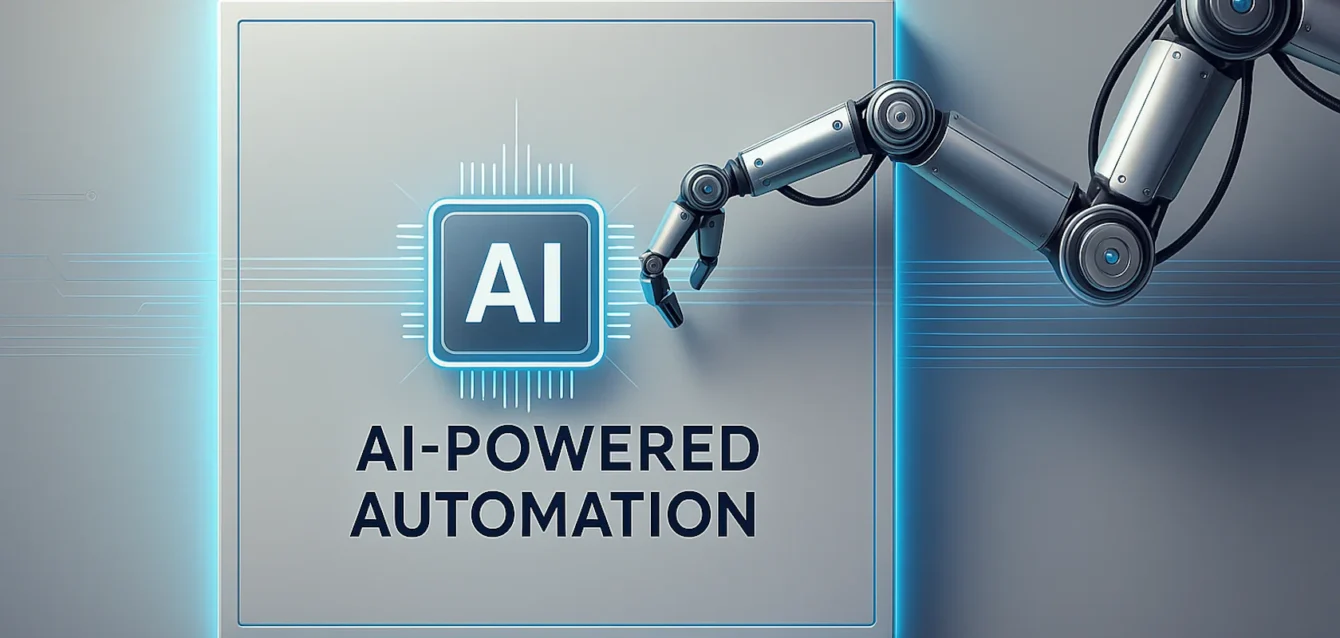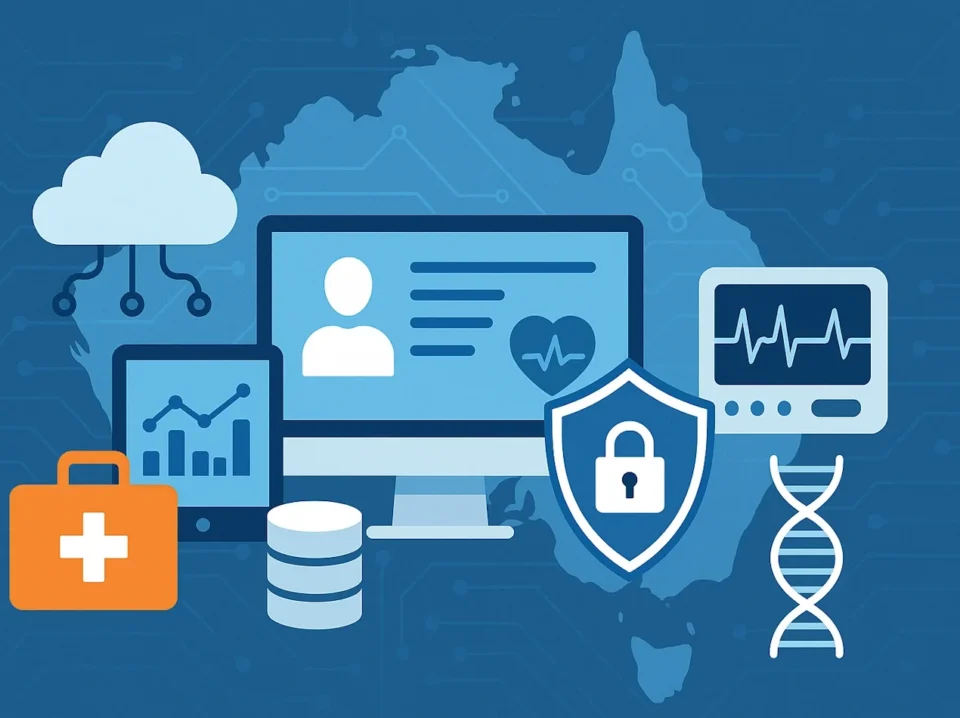Revolutionizing Business Efficiency
AI-powered automation solutions are transforming how businesses operate. Companies of all sizes are integrating AI into workflow automation to streamline processes and boost productivity. These advanced digital business solutions use machine learning and intelligent algorithms to automate tasks, reduce manual effort, and minimize errors.
As markets become more competitive and data-driven, adopting AI-driven automation is essential. Industries like retail, healthcare, logistics, and manufacturing are already seeing massive benefits. In retail, AI automates inventory management and personalizes customer service. In healthcare, it streamlines patient workflows and record-keeping. In logistics, AI optimizes supply chains and delivery routes. In manufacturing, it enables predictive maintenance and quality control. The following sections explore these benefits and real-world examples in detail.
Key Benefits of AI-Powered Automation
Modern enterprises gain a range of advantages by adopting AI-powered automation:
- Reduced Manual Effort and Errors: AI handles repetitive, rule-based tasks automatically, such as data entry, approvals, and report generation. This frees employees to focus on higher-value work and greatly reduces human errors (e.g. typos) in processes like invoice processing or record-keeping.
- Enhanced Efficiency and Productivity: AI systems operate around the clock and handle tasks much faster than humans. For example, an AI-powered workflow can approve requests or generate reports in seconds, whereas manual processing might take hours or days. The result is dramatically faster cycle times and higher overall output.
- Faster, Data-Driven Decisions: AI can analyze large volumes of data in real time to uncover insights. Embedding predictive analytics into workflows helps organizations make smarter decisions quickly. For instance, AI can forecast demand from sales data, enabling managers to reorder stock optimally and respond to market changes.
- Scalability and Agility: AI solutions scale easily as the business grows. Instead of hiring more staff, companies often increase computing resources or software capacity. AI systems also adapt by learning from new data, making automation flexible to evolving business needs.
Industry Applications of AI-Powered Automation
AI-driven automation is already in action across many industries, delivering significant improvements.
Retail: Smarter Inventory and Customer Experience
In retail, AI-powered solutions improve operations and customer service. Predictive algorithms analyze sales trends and seasonal factors to forecast demand, ensuring shelves stock the right products to minimize stockouts and overstocks. For example, AI-driven inventory systems can automatically reorder popular items before they run out.
AI also enhances personalization. E-commerce recommendation engines suggest products based on shopper behavior, boosting sales. Chatbots and virtual assistants handle customer questions 24/7, providing instant answers. In physical stores, cashier-less checkout systems (like those used by Amazon Go) and shelf-scanning robots automate shopping, eliminating lines and speeding operations.
Healthcare: Streamlined Patient Care and Records
Healthcare providers deal with massive amounts of paperwork and patient data. AI-powered automation significantly reduces this burden. For example, AI can extract data from patient intake forms, insurance cards, and lab results and then update electronic health records automatically, cutting down on manual entry and errors.
Patient care also benefits from AI. Virtual assistants and chatbots triage basic patient inquiries, schedule appointments, and send reminders for medications or follow-ups. This frees staff to focus on direct care. On the clinical side, AI algorithms scan medical images (X-rays, MRIs, etc.) to highlight anomalies like tumors or fractures. Predictive analytics can flag high-risk patients (e.g. those likely to be readmitted) so care teams can intervene early, improving outcomes.
Logistics: Optimized Supply Chains and Delivery
In logistics, AI-powered automation streamlines supply chains from warehousing to delivery. Inside warehouses, autonomous robots guided by AI pick and pack items, cutting down the time workers spend walking aisles. Computer vision systems scan barcodes and verify items on packing lines, preventing shipping errors.
AI also optimizes delivery routes and fleet management. Predictive models calculate the fastest, most fuel-efficient routes by analyzing traffic, weather, and delivery windows. Large delivery companies use AI daily to assign optimal driver routes, cutting fuel costs and speeding deliveries. IoT sensors on vehicles feed data to AI to predict maintenance needs, preventing breakdowns and downtime.
End-to-end, AI-driven workflows synchronize inventory across multiple locations. If one warehouse runs low on a part, the system can automatically transfer stock from another location or trigger a just-in-time order. The result is fewer stock-outs and faster fulfillment.
Manufacturing: Predictive Maintenance and Quality Control
Manufacturing plants are evolving into smart factories powered by AI automation. A key application is predictive maintenance: sensors on machines collect data on vibrations, temperature, and other metrics. AI analyzes this data to predict equipment failures before they happen, so companies can schedule maintenance proactively. This prevents downtime and extends machinery life.
Quality control is also enhanced with AI. High-speed cameras and image recognition systems inspect products on the line, catching defects or deviations that humans might miss. When a fault is detected, automated workflows remove the item for review and adjust the production process. This ensures consistent product quality and reduces waste.
AI is also used to optimize production planning. Machine learning models forecast demand and raw material needs, then adjust production schedules automatically. For example, if demand spikes, the system can ramp up a production line and reorder parts just in time. These smart processes boost output and efficiency while keeping costs low.
Integrating AI Workflow Automation in Your Business
Implementing AI-powered workflow automation involves several strategic steps:
- Identify Automation Opportunities: Review your processes to find repetitive, rule-based tasks that consume time, such as data entry, approvals, or report generation. Prioritize areas with high volume or error rates.
- Choose the Right AI Tools: Select platforms and tools that fit your needs. This could include AI-driven workflow automation software, robotic process automation (RPA) tools with AI, or custom machine learning models. Ensure they integrate with existing systems (ERP, CRM, etc.) and handle data securely.
- Integrate and Train: Connect the AI system to your data sources and workflows. Provide historical data to train AI models (e.g. past sales data for demand forecasting) and define the business rules that guide each automated workflow.
- Test and Monitor: Start with a pilot program for your first automated workflow. Monitor performance using metrics (processing time, accuracy, etc.) and gather feedback. Identify any bottlenecks or errors and refine the AI models and workflow steps.
- Scale and Improve: Once a pilot succeeds, expand automation to more tasks and departments. Continuously collect data and retrain AI models with new information. Regularly review and refine workflows so the automation adapts to changing business needs.
By following these steps, businesses can build smart digital business solutions that integrate AI into everyday processes. The result is streamlined operations, lower costs, and a competitive edge in a fast-changing market.
Conclusion
AI-powered automation solutions are revolutionizing business operations. By reducing manual work, minimizing errors, and accelerating data-driven decisions, these technologies dramatically boost efficiency and productivity. Industries like retail, healthcare, logistics, and manufacturing already use AI-driven workflows to improve outcomes. This shift allows companies to focus human talent on strategic tasks while AI handles routine processes.
Whether you’re a small business owner or an enterprise executive, the advantages are clear: the future of business is AI-driven. These automation solutions help any organization stay competitive. By taking the leap into AI-powered automation, companies transform their operations and prepare for long-term success.





